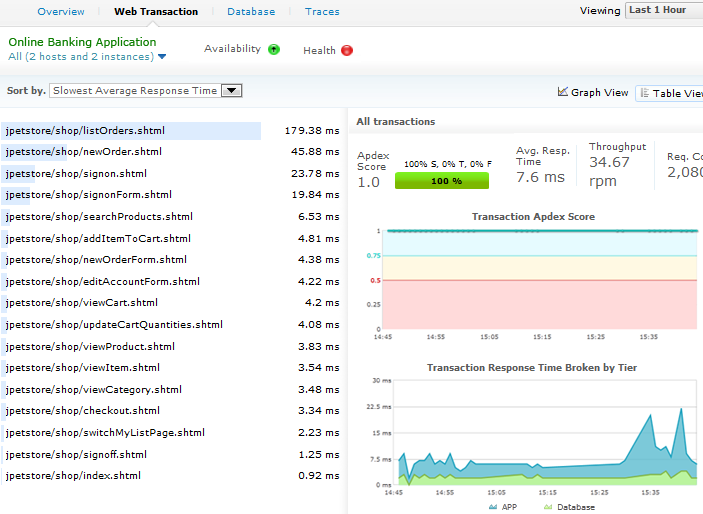“Load testing” is a term that is utilized in many different ways in the community that tests software professionally. It generally refers to practices of modeling expected usage of software programs by emulating multiple users who access the program simultaneously. As such, this particular method of testing has been the most relevant for systems of multi-users. It is often one that is built using a server/client model, such as servers of the web. However, it’s important to note, that graphics editors or word processors are capable of being forced to read documents that can be quite large; or a financial package can be forced to form reports that are based on many years’ worth of information.
The most accurate forms of load testing can emulate actual instances of usage, in contrary to testing utilizing analytical or theoretical modeling. It lets the user(s) measure their websites’ performances of QOS based on true behaviors of customers. Approximately all of the tools of frame-works and load testing tool follow paradigms of classical load testing. When customers visit a website, its script recorder captures the communication in a record which creates interaction scripts that are related.
Load generators try to replayed scripts that are recorded, which can possibly modify with test parameters that are different. In the procedure of replaying, both software and hardware stats are collected by conductors upon monitoring, some of which include, but are not limited to including memory, CPU, disk IO of physical servers and their response times. All of the stats undergo analysis and reports of load testing are generated. Performance and load testing analyzes software that’s intended for audiences of multi-uers by subjecting software programs to numbers of live and virtual users that are different while supervising measurements of performance under loads that are different. Testing of loading and performance is often conducted in an environment of testing that’s identical to environments of production prior to the software system being allowed to go live.
Additional Reading:

 Regardless of the product or service your website is selling, the topic of visitor conversions is at the forefront of many conference calls and board meetings. Whether you have a sprawling digital marketplace, or feature a specialized set of products, it’s imperative that your website be designed to promote higher conversion rates. While there are many different methods associated with enhancing the conversion of visitors to customers, none is as important as the performance of your website. Website administrator’s must monitor a wide array of metrics, but one of the most important monitoring metrics involves the performance and functionality of the entire website. Therefore, there’s a direct connection between the quality of your website monitoring solution and your website conversion rate.
Regardless of the product or service your website is selling, the topic of visitor conversions is at the forefront of many conference calls and board meetings. Whether you have a sprawling digital marketplace, or feature a specialized set of products, it’s imperative that your website be designed to promote higher conversion rates. While there are many different methods associated with enhancing the conversion of visitors to customers, none is as important as the performance of your website. Website administrator’s must monitor a wide array of metrics, but one of the most important monitoring metrics involves the performance and functionality of the entire website. Therefore, there’s a direct connection between the quality of your website monitoring solution and your website conversion rate. f you were to compare the requirements of modern websites with those from a decade ago, you’d be surprised how user demands have increased. As the demand for more technology and complex interfaces increase, the need for an effective monitoring solution also enhances. While there are many free website monitoring tools capable of determining the uptime and availability of a Web server (known as low-end monitoring), these solutions are extremely narrow in its abilities. If you wish to have detailed insights regarding the functionality of the website and enterprise components, as well as information regarding user activity/behavior, then you must seek out a high-end website monitoring solution. Also referred to as active/passive monitoring, these solutions provide in-depth monitoring capabilities.
f you were to compare the requirements of modern websites with those from a decade ago, you’d be surprised how user demands have increased. As the demand for more technology and complex interfaces increase, the need for an effective monitoring solution also enhances. While there are many free website monitoring tools capable of determining the uptime and availability of a Web server (known as low-end monitoring), these solutions are extremely narrow in its abilities. If you wish to have detailed insights regarding the functionality of the website and enterprise components, as well as information regarding user activity/behavior, then you must seek out a high-end website monitoring solution. Also referred to as active/passive monitoring, these solutions provide in-depth monitoring capabilities. As technology advances, so does the digital marketplace. The driving force behind such advancements is the complex architecture and infrastructure found within websites and its various applications. Regardless of the purpose of your website, there are bound to be dozens of unique transactions. All of these transactions support the overall interactivity and user-experiences. Therefore, in order to provide a truly stable and high-performing website, website and application transactions must be continually monitored. While there are many different methods to accomplish this goal, a well-designed website monitoring tool should provide the necessary transaction monitoring solutions.
As technology advances, so does the digital marketplace. The driving force behind such advancements is the complex architecture and infrastructure found within websites and its various applications. Regardless of the purpose of your website, there are bound to be dozens of unique transactions. All of these transactions support the overall interactivity and user-experiences. Therefore, in order to provide a truly stable and high-performing website, website and application transactions must be continually monitored. While there are many different methods to accomplish this goal, a well-designed website monitoring tool should provide the necessary transaction monitoring solutions.